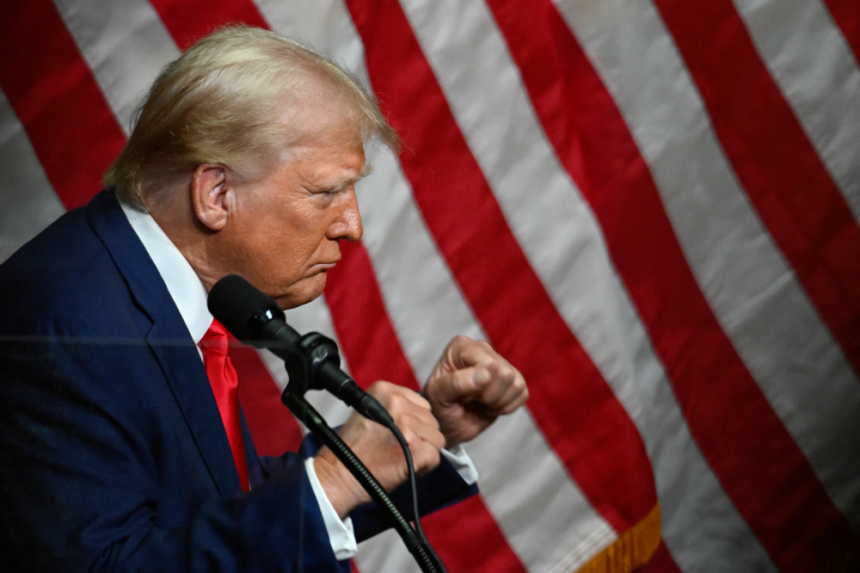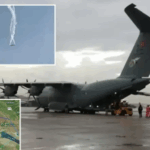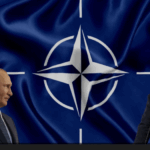The Foreign Policy article offers a critical analysis of the notion that Donald Trump embodies a realist foreign policy position, particularly concerning his approach toward China. The key points are as follows:
Realist Misconception: In 2016, Trump was perceived as a realist, as opposed to Hillary Clinton’s apparent neoconservatism. Realists advocate for a pragmatic balance of national interests, devoid of ideological constraints. However, Trump’s policies and behaviour are casting doubt on this perspective.
Current Perspective: In 2024, some argue that Trump still follows a realist approach, as evidenced by his desire to end the Ukraine war and his selection of Chinahawk J.D. Vance as his running mate. Vance argues that the United States cannot simultaneously support both Taiwan and Ukraine.
The article argues that Trump’s past actions contradict the principles of realism, highlighting flaws in realist assumptions. His foreign policy was marked by a lack of discipline, inconsistency, and a predilection for flashy spectacles rather than careful planning.
Critique of China Policy: Trump’s approach to China lacked consistency and was driven more by political theatrics than strategic deliberation. His support for Xi Jinping and haphazard handling of economic and diplomatic affairs compromised a consistent realist approach.
Policy Failures: During Trump’s initial term, he faced unsuccessful endeavours such as the poorly planned North Korea denuclearization negotiations. The administration’s management of international alliances and trade deals also deviated from realistic ideas.
The article challenges the notion that Trump and Vance would prioritize Taiwan over Ukraine strategically, arguing that such a simplification distorts the accurate assessment of the advantages and disadvantages of U.S. engagement in both conflicts.
Conclusion: The article suggests that Trump’s foreign policy lacks the necessary discipline and strategic depth for effective realism.
Read the full article below.
China Hawks’ Faith in Trump Is Delusional
When Donald Trump first ran for the U.S. presidency in 2016, a wave of writing suggested that he was a realist. In this framing, Democratic Party candidate Hillary Clinton was presented as a neoconservative hawk who would start wars. Trump, by contrast, would balance U.S. commitments with its resources. He would avoid foreign conflicts and quagmires. He would be less ideological in his approach to nondemocratic states.
In 2024, this thinking has returned. Some realist voices are again suggesting that Trump is one of them. Trump’s desire to end the war in Ukraine—even though he simply intends to let Russia win—is taken as evidence of this. So is the selection of Ohio Sen. J.D. Vance as his vice presidential candidate. Vance has famously said that he does not care what happens to Ukraine. Conversely, he is a China hawk who seems to believe the United States cannot support both Taiwan and Ukraine simultaneously.
The notion that U.S. support for Taiwan and Ukraine is a trade-off is the most controversial component of the Trump realist position. Former Defense Department official Elbridge Colby, for example, has argued prominently that U.S. support for Ukraine undercuts its ability to help Taiwan, and that Europe should be almost exclusively responsible for helping Ukraine (or not).
But these hopes are badly misplaced. A second Trump term may well take an entirely different tack on China from the hawks—and even if he wants to move against Beijing, he lacks the discipline and ability to do so.
There is far more in Trump’s first term to suggest indiscipline, showboating, and influence-peddling than the clear-eyed, bloodless calculation of national interest that realists aspire to.
On China, Trump was undisciplined and sloppy. Yes, he turned against China in 2020, during the final year of his term, but that was more to deflect blame for COVID-19 than out of any realist or strategic reappraisal of U.S.-China relations. COVID-19 suddenly became the “kung flu” in Trump’s vernacular in an openly racist bid to change the subject.
Trump also undercut any ostensible focus on China by picking unnecessary fights with the United States’ regional partners. U.S.-South Korea and U.S.-Australia relations, for example, sank to their lowest point in years as Trump picked fights with their leaders because he wanted a payoff for the U.S. alliance guarantees.
Realism values allies for their ability to share burdens, project power, and generate global coalitions. Trump does not seem to grasp that at all. When Trump backed off his criticism of Japan, the turning point was apparently then-Prime Minister Shinzo Abe’s relentless flattery, including giving Trump a gold-plated golf club, rather than any strategic reevaluation by Trump or his team. Such frippery is exactly the opposite of the cold calculation that we associate with realism.
Trump also sank the Trans-Pacific Partnership (TPP) and all but dropped earlier U.S. rhetoric about a pivot or rebalance to Asia. Were China a threat that Trump took seriously, then building a tighter trade area among the United States’ Asian partners would be a smart move to pool local allied economic power and build patterns of administrative coordination among those partners. Indeed, that was the rationale behind TPP and the “pivot” to increased engagement in the Indo-Pacific when it was proposed by the Barack Obama administration. Trump did not see that, either; he is obsessed with imposing tariffs, even against allies, which violates the realist tenets that concern allied power accumulation and coordination against shared threats.
Finally, Trump’s admiration for Chinese President Xi Jinping’s autocracy was blatant, and Trump has once again recently praised Xi as his “good friend.” The former U.S. president has spoken approvingly of China’s crackdowns in Tiananmen Square, Xinjiang, and Hong Kong. He solicited Chinese help in the 2020 election, and China happily channeled money to Trump’s family and his properties during his presidency.
Trump clearly craves authoritarian powers at home and is happy to take China’s money. He was happy to pardon Republican lobbyist Elliott Broidy, who was convicted for illicitly acting on Beijing’s behalf. It stretches credulity to suggest that Trump will lead the United States, much less an Indo-Pacific coalition, in a major shift against a power that he admires. China will probably just throw money at him if he is reelected—especially after seeing his U-turn on a TikTok ban, a policy that he backed in his first term but failed to deliver on, after facing pressure from billionaire TikTok investor Jeff Yass.
Little else in Trump’s first term suggests s a thoughtful, realist weighing of priorities: Trump’s most important first-term foreign-policy venture was the attempted denuclearization of North Korea. Unsurprisingly, that effort was amateurish, sloppy, and unplanned—and it failed.
There is a realist argument for reaching out to Pyongyang. The United States’ long-standing policy of containment and deterrence has not changed North Korea, nor did it prevent its nuclearization. North Korea is now a direct nuclear threat to the U.S. mainland. A realistic foreign policy would accept that as an unchangeable fact and react to it. Perhaps a bold move by a risk-taking statesman could break the logjam.
Trump might have had the chance to pull this off, but he failed due to his own lack of discipline. Trump did not prepare for his meetings with North Korean dictator Kim Jong Un; instead, he simply walked off the plane and thought his New York tough guy shtick would somehow bowl over a man raised in the crucible of North Korea’s lethal family politics. There was no interagency process to build proposals ahead of time, nor any kind of realistic, measured deal that could have won over Pyongyang.
According to John Bolton, then Trump’s national security advisor, the president did not even read in preparation for the summits. Instead, Trump demanded the complete, verifiable, and irreversible nuclear disarmament of North Korea in exchange for sanctions removal, then walked out of the Hanoi summit when Pyongyang predictably rejected this wildly unbalanced so-called deal. Talks collapsed because Trump had not prepared and had no idea how to bargain on the issues when his first offer was rejected.
But Trump did get what he really wanted—lots and lots of publicity. His hugely hyped—and criminally underprepared—first summit with Kim in Singapore brought a week of nonstop news coverage. His later trip to the Demilitarized Zone, which included briefly walking inside North Korea, brought another wave of coverage. Trump even demanded that he receive the Nobel Peace Prize. This is showboating, not strategy.
The big issue in the realist case for Trump and Vance is that they will put Taiwan explicitly ahead of Ukraine in a ruthless prioritization of U.S. interests. As Andrew Byers and Randall Schweller write, Trump “understands the limits of American power.” From this perspective, the United States cannot reasonably hope to fight Russia and China simultaneously, much less a coordinated “axis” of those countries working with rogues such as Iran and North Korea. This notion is particularly connected with Vance, who has explicitly advocated abandoning Ukraine.
Yet Trump himself does not think this way. Trump’s supposed policy positions emerge on the fly as he speaks. He is lazy. He is not capable of the strategic thinking that realists want to attribute to him; one must only listen to his campaign speeches this year to see this. He routinely lies, makes up stories, and speaks in indecipherable word-salads. When Trump has spoken on Taiwan, he makes it clear that he sees it as just another free-riding ally that owes the U.S. protection money. In an interview with Bloomberg, Trump said the United States was “no different than an insurance company” and that Taiwan “doesn’t give us anything.”
It stretches psychological credulity to suggest that the United States under Trump will ruthlessly abandon a struggling, nascent democracy under threat by a fascist imperialist, but then abruptly fight for another new democracy under threat by an ever more powerful fascist imperialist. The prioritization of Taiwan over Ukraine misses the obvious precursor that the Middle East, in turn, is less valuable than Ukraine. But instead of reevaluating the United States’ position in the Middle East, Trump will almost certainly deepen U.S. involvement in the region because of the ideological fixations of his Christianist base.
The strategic case for elevating Taiwan over Ukraine is also far more mixed than Vance and Trumpian realists suggest.
First, China is much more powerful than Russia. So, a conflict with it would be far more destructive. The Russia-Ukraine war has been locally contained and, despite Russian bluster, not escalated to nuclear confrontation. That seems less likely in an open, U.S.-China war. It is an odd “realist” recommendation to suggest that the United States should take a provocative line against a stronger power, which increases the risk of great-power war, but not push its preferences on a weaker opponent where U.S. involvement is limited to a lower-risk proxy war.
Second, the U.S. commitment to Ukraine is much less costly than a parallel commitment to Taiwan. The United States is not fighting directly to defend Ukraine. It would have to do so to defend Taiwan. Taiwan defense would require the United States to project enormous force over a huge distance of open water at great expense—plus, there would be combat losses of major U.S. platforms, such as ships and aircraft.
By contrast, U.S. aid to Ukraine has mostly come in the form of money and midsized, ground-based platforms, totaling around $175 billion over two-and-a-half years. This is small and easily manageable because of NATO’s propinquity. U.S. national security spending is approximately $1 trillion annually; the country’s annual economic production is approximately $25 trillion. Notions that U.S. aid to Ukraine is an unsustainable overstretch, or that it is bolstering another “forever war,” are simply not correct.
In Ukraine, the United States is also using intelligence assets and coordination relationships with NATO allies that have long been in place—and resources that have little relevance to a Taiwan conflict. Washington is not going to engage the Chinese army in ground conflict, just as it does not need U.S. aircraft carriers to help Ukraine. As a specific example of a possible trade-off, Vance has suggested the United States lacks the artillery shell production capacity to meet both national defense needs and those of Ukraine. But that argument implies abandoning Ukraine today for an unidentifiable but apparently imminent U.S. ground war tomorrow.
Realist hopes for Trump and Vance assume an intellectual discipline that both men lack and elevate geopolitical trade-offs that are less acute than realists admit., Trump is lazy, unread, venal, easily bought, susceptible to autocrats’ flattery, captive to the ideological fixations of his domestic coalition, ignorant of U.S. strategic interests, and dismissive of alliances that amplify U.S. power. Vance is ostensibly more clear-eyed, but he is a foreign-policy neophyte in the pocket of Silicon Valley donors, including his mentor Peter Thiel. He has been a senator for less than two years, before which he was a financier and author whose interests were local.
The fiscal space to reorient U.S. defense spending is there. If Vance and Trump were truly serious about confronting China, they would not be proposing yet another massive Republican tax cut, for example. The traditional liberal internationalism Vice President Kamala Harris and President Joe Biden represent is far more likely to build a durable global coalition against Chinese and Russian revisionism than the venal caprice masquerading as strategy that Trump would bring back to the White House.
By Robert E. Kelly
Source: Foreign Policy







